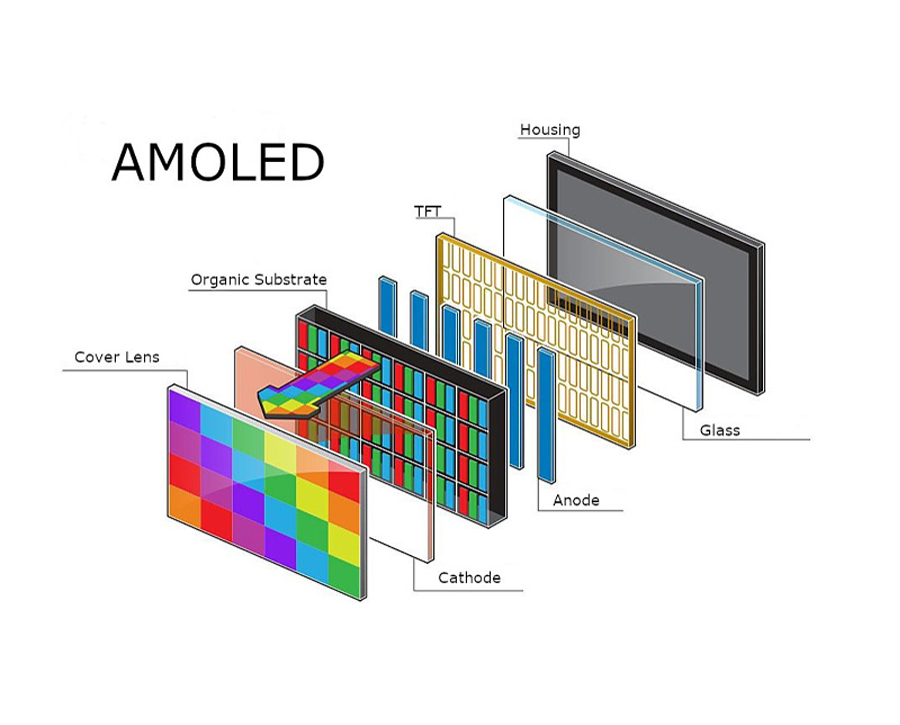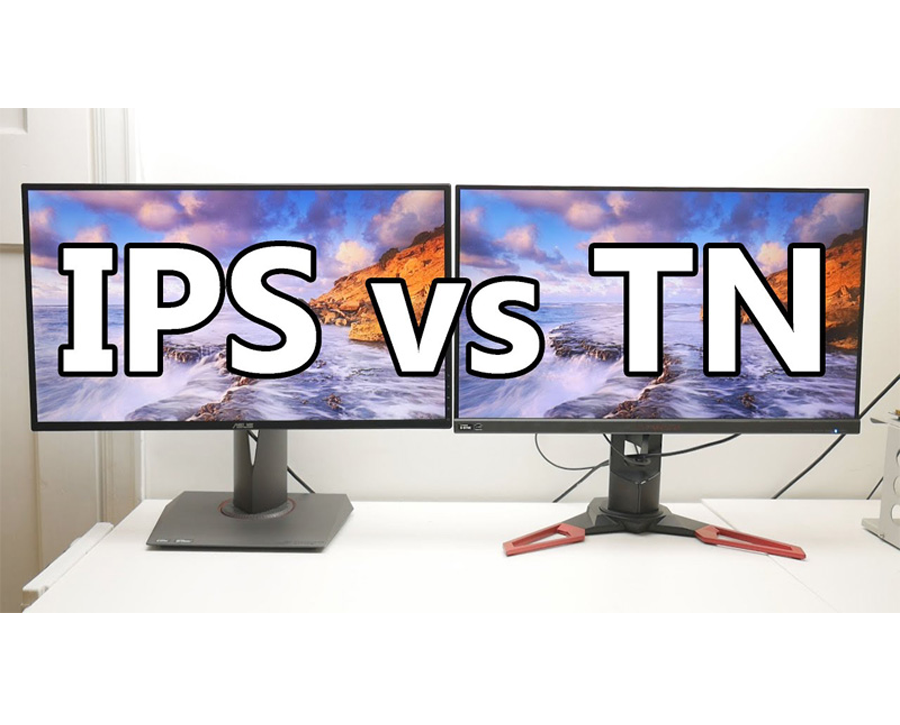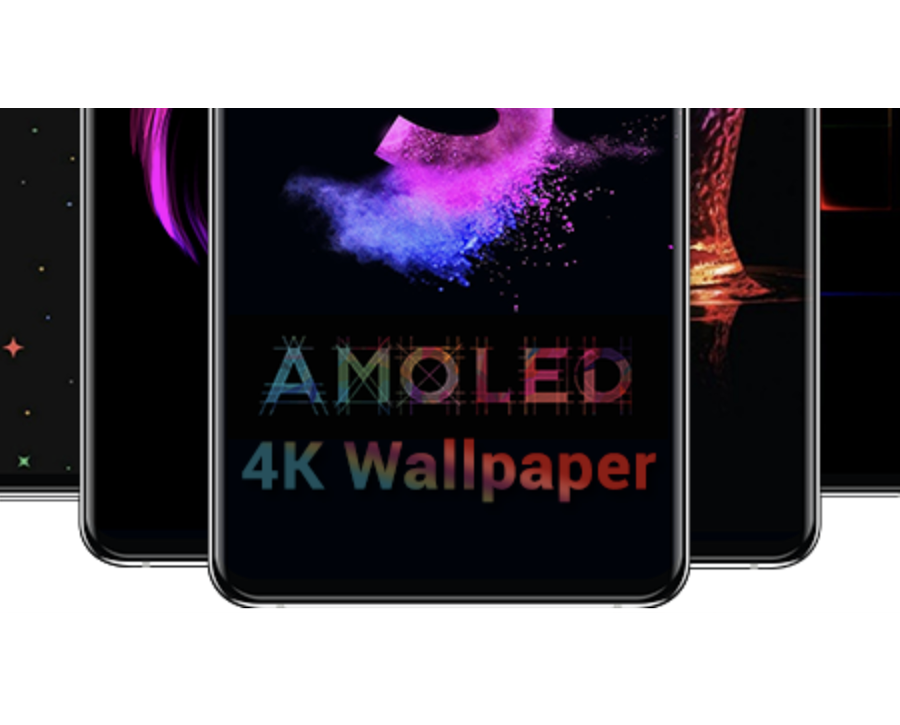
Imagine choosing between two devices. One runs on an IPS, and the other one operates on an AMOLED display. How would you choose the best one for your needs? In this guide, you will learn the major distinctions between IPS and AMOLED technologies.
What are IPS and AMOLED Displays?
Before diving into the comparison, let’s define the two display technologies:
IPS (In-Plane Switching)
IPS is one of the kinds of LCD technology which is valued for its capability to produce intensive colors and the wide viewing angle. If you have ever turned your phone—or your monitor—at an angle, and seen that the colors remain true, that’s IPS in action.
It uses a backlight to light up the screen; so while it will provide highly accurate colors, what it lacks are deep blacks compared to this other technology. As such, you will come across IPS in monitors and mid and high-end devices where color uniformity is critical.
Active Matrix Organic Light Emitting Diode
AMOLED goes a step further. It stands for Advanced Materials Organic Light Emitting Diode which uses self-lit pixels that do not require a backlight. This means that it can achieve much higher contrast, and true blacks, and intense and vivid colours at the same time.
Have you ever wished to own that great black color of the premium phone screen? That’s AMOLED – it’s more efficient at using energy for darker displays and is frequently used in flagship smartphones and slim smartwatches.
Real-world Applications
Smartphones
In 2025, AMOLED displays will remain popular in flagship smartphones. This is because the tech specialises in outputting high and deeper blacks and contrasts that are perfect for game and video streaming. Now Samsung and Apple have gone even further and added more layers to the AMOLED displays like having a higher refresh rate and energy-saving features.
IPS panels, on the other hand, are still favored in budget and mid-range smartphones. They offer excellent color accuracy and longevity, making them suitable for general use.
Televisions
When it comes to TVs, AMOLED (often branded as OLED in larger screens) leads in premium models. The pixel-level illumination creates a cinematic experience with superior contrast and HDR performance. Meanwhile, IPS panels are commonly found in affordable and mid-range TVs, delivering consistent picture quality across wide seating arrangements.
Monitors
IPS monitors remain the gold standard for professionals working in fields like photo editing and graphic design. Their precise color reproduction ensures accuracy, which is critical for creative tasks. AMOLED monitors are emerging in gaming setups, where high contrast and fast response times enhance immersion.
Innovations in IPS and AMOLED technologies
Advancements in IPS
- Mini-LED backlighting: IPS panels in today’s generation have Mini-LED that enhances the contrast and brightness ratio. It makes this innovation reduce the difference in black level between the IPS screen and AMOLED panel.
- Higher refresh rates: Currently, update rates of IPS panels are as high as 240Hz to meet the needs of gamers.
- Eco-friendly designs: Companies are cutting power costs and employing recycled material to ensure they adopt sustainable production methodologies.
Advancements in AMOLED
- Improved durability: Advanced new materials and working techniques have greatly alleviated the burn-in problem in previous AMOLED versions.
- Foldable and flexible displays: AMOLED is, by design, a flexible technology and, in 2024, manufacturers released foldable products in terms of design for mobile phones and tablets.
- Brighter displays: AMOLED has been solving the brightness issue and they can be used for operations under outdoor conditions.
Strengths and Weaknesses
IPS: Pros and Cons
Strengths
- Accurate and consistent colors
- Wider availability and lower cost
- Long-lasting performance without burn-in risks
Weaknesses
- Limited contrast compared to AMOLED
- Higher energy consumption
AMOLED: Pros and Cons
Strengths
- Superior contrast and deep blacks
- Energy-efficient for dark-themed content
- Flexible designs enabling foldable screens
Weaknesses
- Prone to burn-in (though less frequent with newer models)
- Higher production costs
Choosing Between IPS and AMOLED
IPS or AMOLED? The choice will quite depend on how you are going to use the device. This section will assist you make the proper decision:
For Media Consumption
If watching movies, streaming shows, or gaming is your priority, AMOLED is the clear winner. Its vibrant visuals, infinite contrast ratio, and true blacks create an immersive experience. Many devices in 2025 now feature HDR10+ and Dolby Vision, which AMOLED handles exceptionally well, ensuring breathtaking picture quality.
For Productivity and Work
Professionals working with design, photo editing, or office tasks may lean towards IPS displays. These panels offer highly accurate color reproduction and wider viewing angles, making collaboration or precise creative work easier. IPS screens also avoid the burn-in risks AMOLED faces with static images, making them ideal for spreadsheet-heavy tasks or document reviews.
Budget Considerations
However if cost is an issue, IPS still gives very good picture quality at an even lower price bracket. AMOLED, despite having been originally known to be costly, is slowly finding its way into mid-range devices because of improvements in production. Affordable smart phones and notebooks present AMOLED models, making expensive panel quality more accessible.
Durability and Outdoor Use
For users who often find themselves in outdoor environments the IPS type screens normally offer better performance in sunlight because they do not have the effect of uneven backlight as with AMOLED at times.
Conclusion
Choosing between IPS and AMOLED in 2024 will all boil down to your preferences and needs. So, the next time you’re comparing screens, ask yourself: Do I want intense, vivid colors and new interesting features? On the other hand, would I prefer accurate color reproduction and product sturdiness.?

Enter the digital world with our advanced display technologies.





